Reviving Dead Malls and Dying Colleges: 2 Successful Cases of Adaptive Reuse
Malls and colleges are closing across the country—reusing or repurposing these spaces is challenging but not impossible. Here at two successful case studies from Nebraska and Texas.
Note: I am traveling in Asia right now, so I thought it would be a good opportunity for some guest posts. If you are interested in writing for College Towns, feel free to reach out to me on Substack or at ryanmallen555@gmail.com.
Today’s guest post comes from Dave Deek, who runs the Governance Cybernetics Substack. He had me on for an interview recently. Dave wanted to return the favor by writing a guest post here at College Towns on adaptive reuse related to higher education. It turns out, dead malls and dying colleges both have similar challenges and opportunities. Enjoy. -Ryan
Nearly one college closes weekly across America1, leaving behind millions of dollars in existing infrastructure, e.g. dormitories, academic buildings, utility systems, and landscapes that most communities see as burdens rather than assets2.
I notice that there are two cases that seem to contradict this state of affairs. Blair, Nebraska, converted a defunct college into workforce housing serving working families. Austin Community College (ACC) transformed a dying mall into an educational hub serving 15,000 students annually.
Both succeeded because they managed to work with constraints and still kept the focus on solving genuine local problems rather than importing generic solutions from elsewhere (i.e. adaptive reuse).
Adaptive reuse thrives when communities build from their authentic needs and leverage existing assets creatively, not when they chase borrowed dreams that worked somewhere else.

The Crisis Nobody Wants to Acknowledge
American higher education is hemorrhaging, especially with 2025’s “delightful” political environment. Enrollment collapsed 15% between 2010 and 20213, and the "demographic cliff" will slash traditional college-age students starting in 20254. If colleges were to die in places like Ames, Iowa (where Iowa State comprises half the population) or Ithaca, New York (where Cornell students equal permanent residents), entire communities would collapse5.
The cheap prices of defunct campuses (for example, Magdalen College's 129-acre campus listed at just $5.5 million) tempt casual buyers. But as Ryan documents in an article on dead colleges, friend groups and amateur investors fail spectacularly due to deferred maintenance, zoning restrictions, and landscaping costs that can reach millions annually.
The real tragedy isn't institutional closure itself; it's how many communities see only endings instead of recognizing these assets as foundations for renaissance when approached strategically.
Casual buyers fail at campus redevelopment, but maybe a more community-driven approach (some say a Strong Town approach) succeeds by understanding the invisible networks that determine community success; the relationships, power structures, and unspoken rules that shape what thrives and what withers.
Every effective transformation starts with: What does this community genuinely need? The most successful projects embrace their constraints as sources of innovation6. Tight budgets force partnerships. Aging buildings demand creative solutions. Complex ownership requires collaborative decision-making.
Three principles separate success from failure:
Start with genuine local needs;
Design for social sustainability alongside financial viability;
Build adaptive capacity for ongoing evolution.
Dana College: How a Small Town Turned Loss into Opportunity
When Dana College closed in Blair, Nebraska, in 2010, this community of 8,000 faced a brutal reality: the closure eliminated 150 jobs and worsened an existing workforce housing crisis that threatened to kill the town slowly.
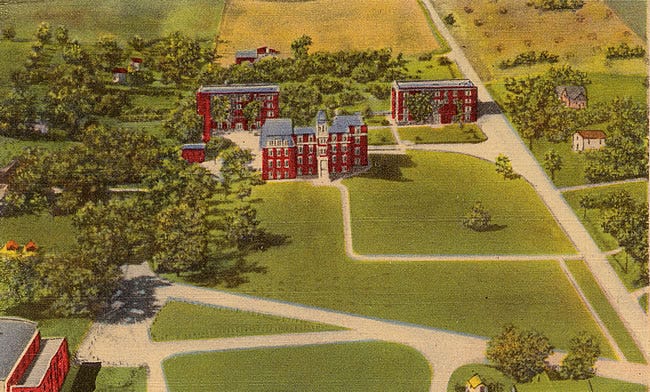
Local Needs Not Being Met
Local businesses couldn't expand because they couldn't house workers. Agriculture companies, manufacturers, and service providers had available positions but no way to attract employees who needed somewhere decent to live. Young families evaluated Blair's housing options and chose to live elsewhere.
The existing rental market offered expensive housing or substandard conditions. Often both. Home ownership remained financially impossible for young workers facing limited inventory and restrictive lending requirements.
Meanwhile, the defunct campus mocked the community's struggles. Fifty acres of dormitories that once housed hundreds now drained municipal resources while solving no problems.
The Insight That Changed Everything
Community leaders asked a different question: How can what we have solve what we need?
The "Transformation Hill" initiative emerged from this reframing. The City of Blair partnered with regional agencies and assembled multiple funding sources7. Rather than viewing the campus as a burden, they reimagined it as an asset that could address Blair's most pressing challenge: quality housing for working families.
From Dormitory to Community Asset
The Dana Suites Project converted a 1960s dormitory into a 12-unit apartment complex with two-bedroom units targeting working families. The original building offered advantages new construction couldn't match: solid construction, an attractive campus location with green space, and existing utilities.
The renovation preserved structural integrity while completely reimagining interior spaces. Former dormitory rooms became spacious family apartments with full kitchens, modern bathrooms, and contemporary finishes—amenities virtually nonexistent in Blair's existing rental market.
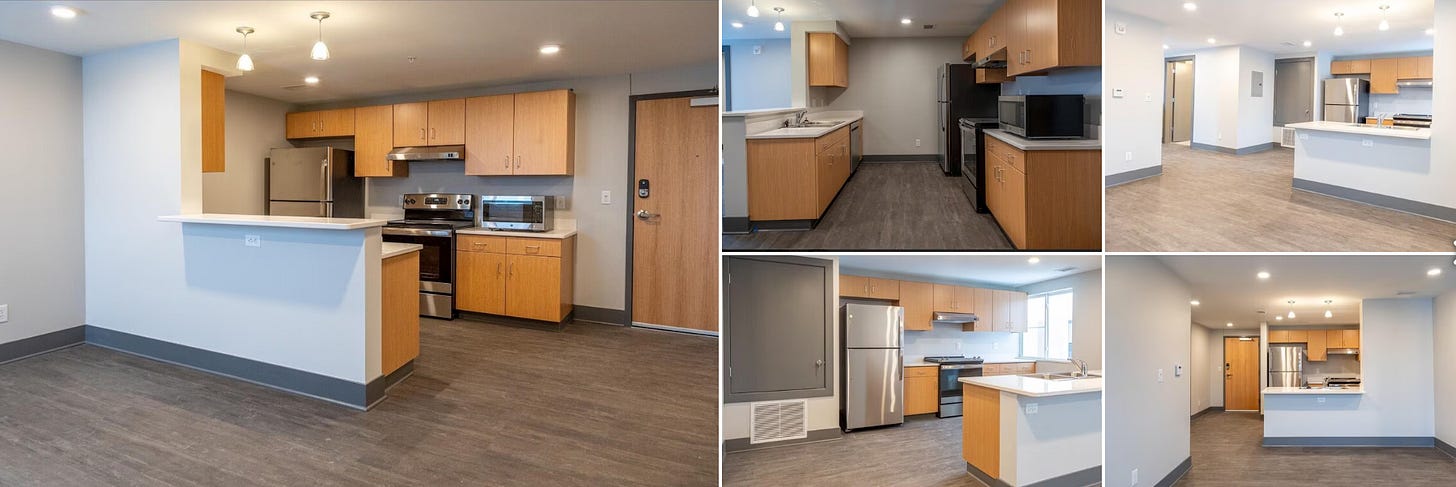
The Innovation That Made It Sustainable
Dana's transformation succeeds because it integrates housing with workforce development. Angels Share Inc., a nonprofit serving young adults aging out of foster care, provides residents with both housing and skills training in construction trades, healthcare support, and other areas where local employers have documented needs.
This creates a pipeline of trained workers supporting broader economic development while providing vulnerable young adults with economic mobility opportunities. Program graduates frequently find local employment, generating sustainable cycles that benefit individuals, employers, and the broader community.
Creative Financing That Actually Works
The project's $2.8 million financing demonstrates how blended funding can make challenging redevelopment viable. Nebraska Rural Workforce Housing Fund grants, state investment finance authority contributions, and below-market long-term financing solved the fundamental affordable housing paradox: private lenders won't finance projects without proven demand, but demand can't be demonstrated without completed projects.
Results That Matter
Five years later, Dana Suites maintains full occupancy with waiting lists. Local employers report significantly improved ability to attract workers. Property tax revenues from the redeveloped campus exceed what the college generated during its final years.
Most significantly, the project transformed community psychology. Instead of viewing institutional closure as pure loss, residents learned that thoughtful redevelopment could actually improve local conditions.
Austin Community College: Institutional Innovation at Scale
Austin Community College's Highland Mall transformation demonstrates strategic adaptive reuse. Instead of responding to crisis, ACC used transformation to expand educational capacity while revitalizing failed commercial infrastructure8.
From Retail Paradise to Economic Wasteland
Highland Mall opened in 1971 as Austin's premier shopping destination. By 2010, it had become a retail casualty—1.2 million square feet sitting largely empty on 80 acres just six miles from downtown Austin.
ACC faced explosive enrollment growth while traditional campus sites had become prohibitively expensive. The community college needed accessible locations for working students requiring job training and continuing education programs.
ACC leadership saw opportunity where others saw failure. Large retail spaces could accommodate classrooms and laboratories. Massive parking could serve thousands of students. The central location provided excellent transportation access. Most importantly, acquisition costs represented a fraction of new construction.9
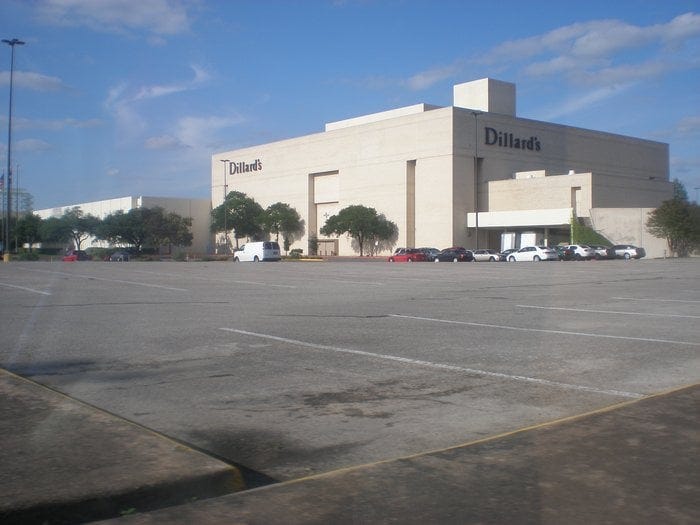
Meeting Needs
ACC's first move converted the former JCPenney into a "math emporium"—a revolutionary approach to remedial mathematics requiring flexible space rather than traditional classrooms. The conversion created a 20,000 square foot open learning environment where hundreds of students could work simultaneously on different concepts while receiving individualized support.
The former department store provided ideal conditions: high ceilings create a welcoming atmosphere that reduces math anxiety, large floor plates allow flexible arrangements, and former fitting rooms became study spaces and offices.
Complete Campus Transformation
Phase One's success led to a complete transformation, serving 15,000 students annually. The former Macy's became an advanced manufacturing program with state-of-the-art laboratories. The food court became a multifunctional student center. Smaller retail stores became specialized labs for nursing, automotive technology, and culinary arts.
Highland Campus enabled ACC to experiment with educational models impossible in traditional settings. Large flexible spaces support competency-based learning where students progress at their own pace. Industry partnerships bring real employers to campus, providing job training leading directly to employment.
Community Integration
The project included mixed-use apartment buildings on former parking areas, providing student and faculty housing while contributing to the regional housing supply. Public transportation improvements connect the campus to Austin's transit network. Local vendors lease campus space, creating micro-economies serving students.
Measurable Success
The campus serves over 10,000 students annually in workforce programs addressing regional labor market needs. Student success rates improved dramatically, particularly in developmental mathematics. Program graduates find local employment at rates exceeding regional averages.
Property values increased substantially, new businesses opened to serve the campus community, and former urban blight became a source of community pride. Successful elements have been replicated at other ACC campuses and studied by community colleges nationwide.
When These Models Work
Dana and Austin succeeded because specific conditions aligned with their approaches.
Dana's Success Recipe
Blair's approach worked because of favorable conditions: community scale enabled stakeholder coordination, regional economic stability within Omaha's orbit made workforce housing viable, Nebraska's rural housing programs provided crucial funding, existing nonprofits like Angels Share provided specialized services, and municipal leadership had capacity for complex project management.
Austin's Formula for Success
ACC's innovation succeeded due to different advantages: metropolitan scale supported comprehensive programming, institutional resources provided financial capacity and credibility, permissive regulatory environment facilitated conversion, strong economy created employer demand, and existing transportation infrastructure enabled broad accessibility.
Universal Success Factors
Certain factors determine success regardless of model: honest assessment of local government capacity, existing social capital and trust, regional economic conditions that support proposed uses, available financial resources, and a supportive regulatory environment.
On that note, rather than copying Dana or Austin exactly, communities should adapt and apply the elements based on their contexts.
Scale projects appropriately for local conditions. Small towns might adapt workforce housing concepts to single buildings. Large cities or cities with massive school systems might replicate educational innovation within existing frameworks.
Leverage genuine local assets and address authentic needs. Dana succeeded by addressing Blair's housing crisis. Austin succeeded by addressing ACC's space requirements. Focus on your needs, not somewhere else that's been solved.
Use existing networks. Both projects worked with established organizations and relationships rather than creating entirely new structures. Saves time, saves energy
Sequence development thoughtfully (incrementalism can work!). Both involved phased implementation that allowed learning and adaptation.
When Constraints Drive Innovation (But Not Always)
Financial limitations forced creative partnerships that strengthened outcomes. Resource constraints forced maximizing existing infrastructure rather than new construction, reducing environmental impact while creating distinctive spaces.
Physical constraints generated distinctive design outcomes. Both projects embraced existing conditions as creative opportunities rather than viewing aging infrastructure as problems to solve.
Ending to Beginning (despite being a cliche)
College closures represent a profound loss, but they also create unprecedented opportunities for reimagining how communities can thrive.
Dana and Austin demonstrate that successful transformation requires understanding genuine community needs, embracing constraints as creative opportunities, and building partnerships that pool resources while maintaining accountability to community benefit.
Communities that will thrive after institutional loss are those that learn to recognize existing assets, build collaborative capacity, and create locally responsive solutions that serve community priorities while remaining flexible for ongoing adaptation.
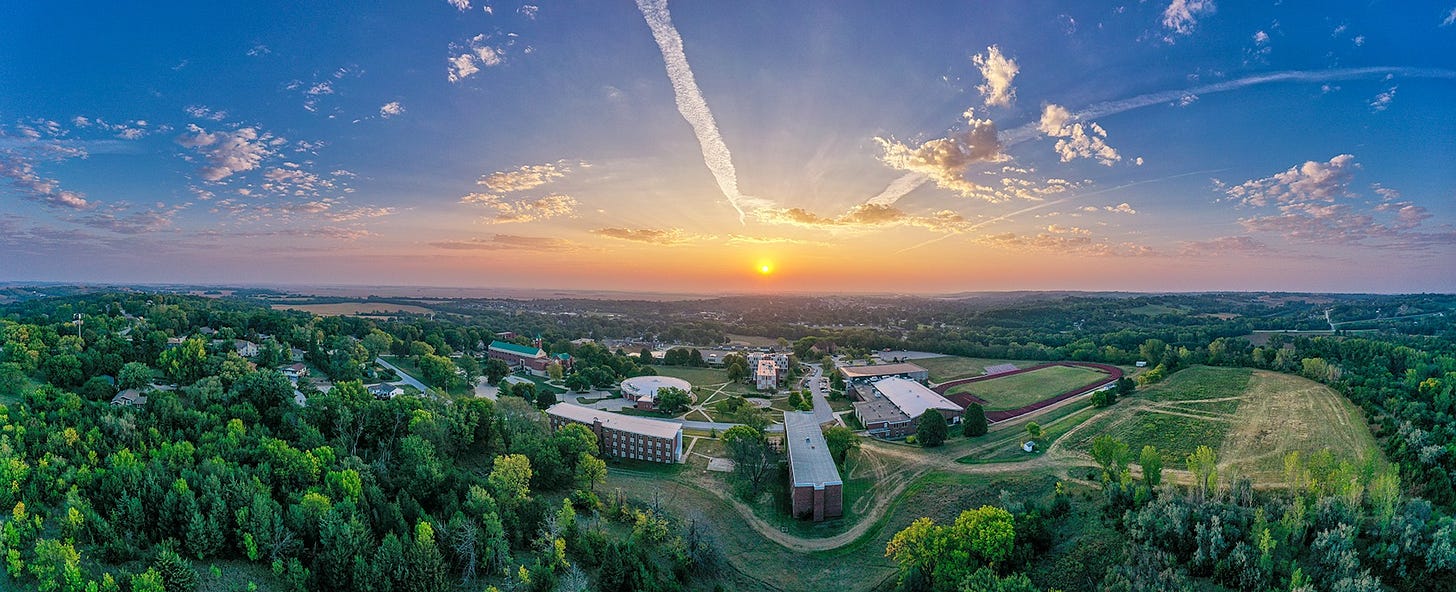
US Colleges Are Shutting Down: Here's Why (+ the Impacts) | Shortform Books, accessed May 15, 2025, https://www.shortform.com/blog/colleges-shutting-down/
How College Campus Closures Affect Everyone | Kuali, accessed May 15, 2025, https://www.kuali.co/post/when-a-college-campus-closes-everyone-is-affected
Federal Reserve Bank Economic Study, accessed May 15, 2025, https://www.federalreserve.gov/econres/feds/files/2025003pap.pdf
University Closures in 2025 | Reflections On Higher Education, accessed May 15, 2025, https://walterwendler.com/2025/02/university-closures-in-2025/
When colleges close, communities take the biggest hit - Marketplace, accessed May 15, 2025, https://www.marketplace.org/story/2025/02/17/when-colleges-close-communities-take-the-biggest-hit
Principles for Adaptive Reuse Projects | netMAGMedia Insights, accessed May 15, 2025, https://insights.netmagmedia.co.uk/white-paper/1134/principles-for-adaptive-reuse-projects/
Transforming the former Dana College Campus - Metropolitan Area Planning Agency, accessed May 15, 2025, https://mapacog.org/calendar/news/transforming-the-former-dana-college-campus/
ACC Highland: A Study of Adaptive Reuse and Urban Infill - ArcGIS StoryMaps, accessed May 15, 2025, https://storymaps.arcgis.com/stories/fe2daa792b104884b9a4bc0585f3bae1
ACC Highland: A Study of Adaptive Reuse and Urban Infill - ArcGIS StoryMaps, accessed May 15, 2025, https://storymaps.arcgis.com/stories/fe2daa792b104884b9a4bc0585f3bae1



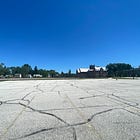
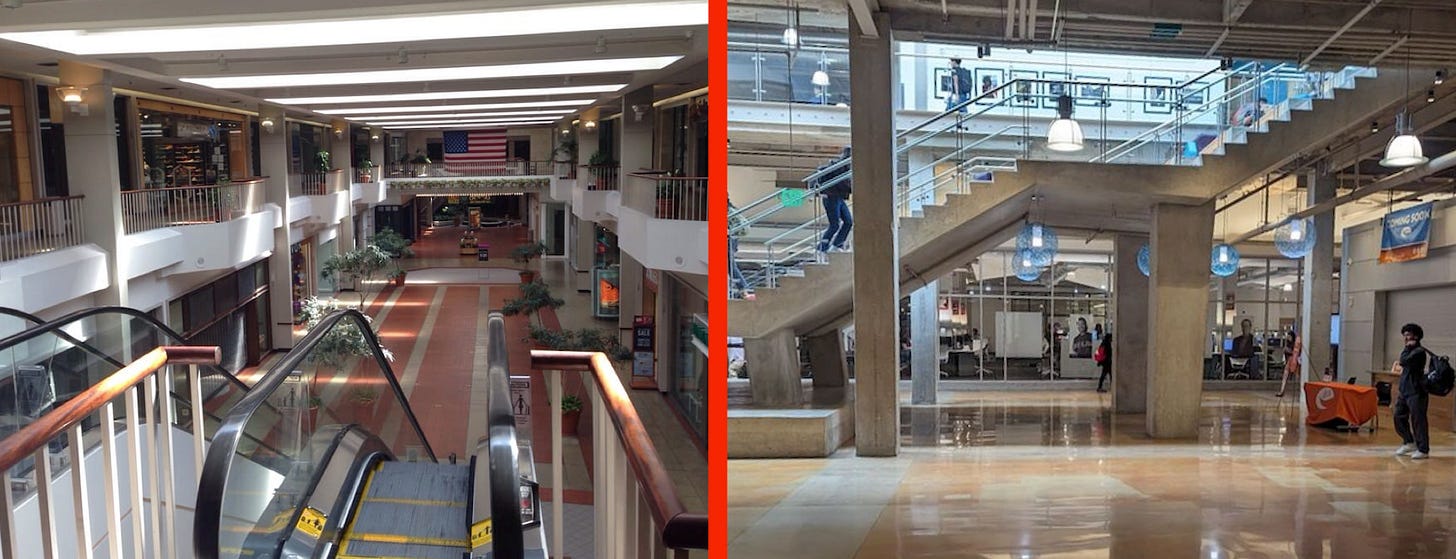

Interesting…as a grad student in my case taking optional literary coursework as a writer, I watched the creation in literally first actions with the ACC = Austin (Texas) Community College transformation. It established a major educational hub within the (seriously lagging) commercially-based shopping mall with the hiring of an entrepreneurially-minded, new head executive.
It rapidly then transformed thoroughly an invaluable multi-county location college into an educational hub all across Travis County (the main Austin-based one) and surrounding counties. Classes steadily continued daily as commercial-mall only usage declined naturally due to the various directions of growth Austin and immediately surrounding towns (like RoundRock and Sugarland) took themselves.
This was a terrific example of an educational entity responding to both the needs and the physical changes of a city, a county and ultimately that corner of the State of Texas. You’ll find this in replication now in other college and mall-based locations throughout Texas but ACC - Austin Community College built the model successfully for them as a education/mall model.
Interesting…as a grad student in my case taking optional literary coursework as a writer, I watched the creation in literally first actions with the ACC = Austin (Texas) Community College transformation. It established a major educational hub within the (seriously lagging) commercially-based shopping mall with the hiring of an entrepreneurally mind new head executive.
It rapidly then transformed thoroughly an invaluable multi-location college into an educational hub all across Travis County (the main Austin-based one) and surrounding counties. Classes steadily continued daily as commercial-only usage declined naturally due to the various directions of growth Austin and immediately surrounding towns (like RoundRock and Sugarland) took themselves.
This was a terrific example of an educational entity responding to both the needs and the physical changes of a city, a county and ultimately that corner of the State of Texas. You’ll find this in replication now in other college and mall-based locations throughout Texas but ACC - Austin Community College built the model successfully.